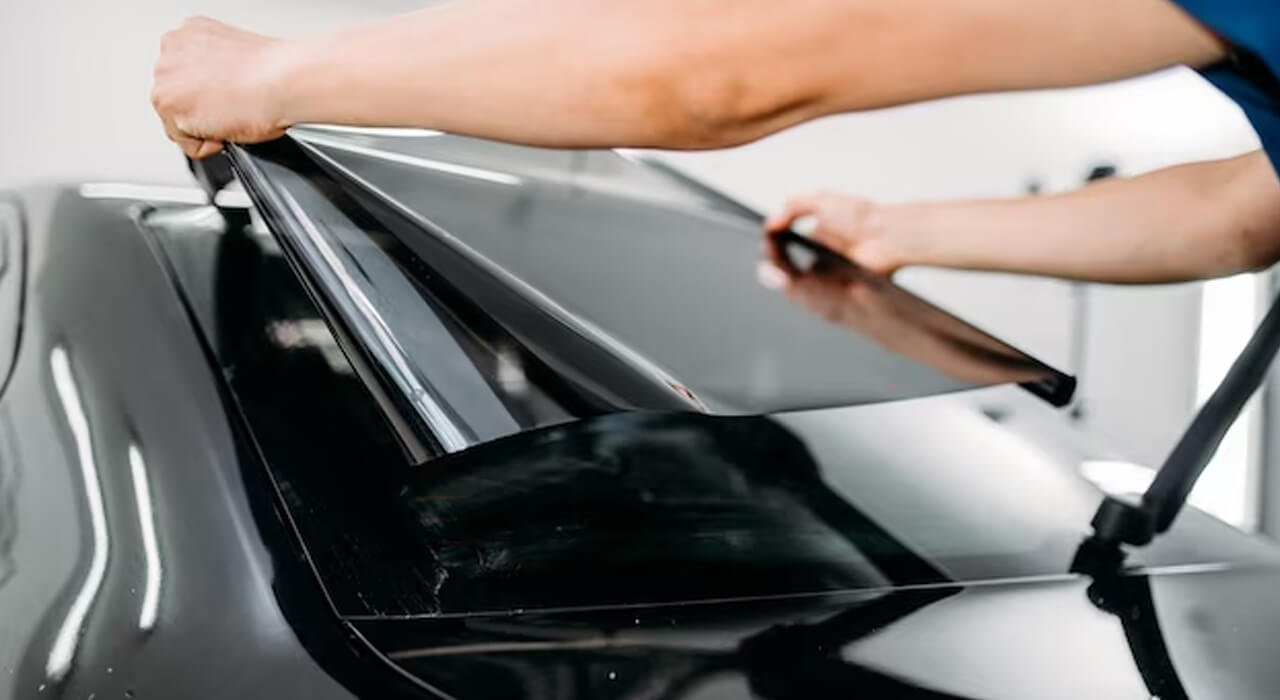Roaming inside a car can be like walking into an oven during the sweltering summer months when the searing sun beats down on us. Driving can be uncomfortable and perhaps dangerous to our health when the heat is oppressive.
The interior of the car and our skin can be harmed by the sun’s damaging ultraviolet radiation. With that said, car tinting emerges as a successful option that offers several advantages to address these problems. We will go into the specifics of automobile tinting in this article, outlining how it can shield you from the sun’s UV rays and heat.
1. Understanding Car Tinting
Tinting your car entails covering its windows with a transparent film. There are several levels in this film, each of which accomplishes a particular task. The level of heat and UV protection provided by car tinting in dubai varies depending on their thickness and shade. The available tints, their advantages, and the legal limitations in your region must all be understood before choosing a certain hue.
2. Benefits Of Car Tinting
- Heat Rejection
A cooler and more comfortable interior can be achieved in your car by considerably minimizing the amount of heat that enters the vehicle. Tints help control interior temperature by obstructing a portion of the sun’s infrared radiation, lowering the need for excessive air conditioning and saving fuel.
- UV Protection
The purpose of car tinting is to block dangerous UV radiations. Long-term UV radiation exposure can cause skin damage, premature aging, and a higher risk of skin cancer. You and your passengers will be protected by tinting your automobile windows against these dangerous rays.
Also Read: Best Dashboard Cleaner For Cars
- Interior Preservation
Over time, your car’s interior may suffer serious harm from the sun’s UV radiation and extreme heat. Leather dashboards, seats, and other surfaces are susceptible to fading, cracking, and discoloration. By preserving the interior of your car, car tinting increases its lifespan and keeps its resale value high.
- Glare Reduction
Sun glare can make it difficult to see and uncomfortable to drive. Windows that are tinted lessen glare, improving driving safety and reducing eye strain.
3. Types Of Car Tinting
- Dyed Tints
These tints have a polyester film layer that has been colored to absorb solar heat and lessen glare. They are reasonably priced, provide decent heat and UV protection, and give your windows a unified appearance. In terms of heat rejection, they might not be as effective as other tint varieties.
- Metalized Tints
Metallic particles are used in metalized tints to reflect heat and UV radiation. Excellent heat rejection, glare reduction, and UV protection are all provided by them. Some people might not like their metallic appearance, and they can obstruct the reception of electrical signals like GPS.
Suggestion:
- Carbon Tints
A significant portion of infrared energy is blocked by carbon particles found in carbon tints. Compared to metalized tints, they provide better heat rejection, UV protection, and a more matte-like appearance. Carbon tints don’t interfere with electronic signals, which makes them a preferred option for many car owners.
- Ceramic Tints
Advanced nanotechnology is used in ceramic tints to efficiently block heat and UV rays. They preserve a clean, non-reflective appearance while providing the maximum level of heat rejection and UV defense. Ceramic tints are more expensive than other choices but do not affect electronics.
4. Legal Considerations
It’s important to be informed of the rules in your area as car tinting laws vary from one region to another. To ensure visibility and safety for law enforcement personnel, certain jurisdictions limit the darkness of tints on specific windows. To prevent any fines or penalties, it’s important to familiarise yourself with the permitted tint percentages for your front, rear, and side windows.
5. Choosing The Right Tint
Depending on your individual needs and tastes, choose the right tint. Think about factors like your climate, spending limit, desired level of heat rejection, and desired look for your car. It is advisable to talk to a reputable tinting professional to receive advice that is specific to your needs.
6. The Tinting Process
To achieve seamless application and durable results, professional automobile tinting should be carried out by skilled specialists. The procedure entails thoroughly washing the windows, cutting the tint film to meet the window specifications, then applying the film with precision using specialized instruments. To prevent the tint from bubbling, peeling, or creasing, installation must be done properly.
7. Maintenance And Care
The following care advice will help your automobile tint last as long as possible and perform as intended:
- After tinting, refrain from rolling down the windows for a few days to give the adhesive time to completely cure.
- Use a soft cloth and a mild, ammonia-free cleaner to clean the tinted glass.
- Avoid using any harsh or abrasive elements that could harm the tint film.
- Check the tint frequently for any signs of damage, and have it fixed.
End Note!
With several advantages like heat reduction, UV protection, glare reduction, and interior preservation, car tinting is an investment that always pays off. You can enjoy a cooler, more pleasant drive while safeguarding your health and the interior of your car by picking the correct sort of tint and abiding by local laws.
To guarantee that your tint remains in top condition for many years to come, be sure to engage with a reliable tinting firm for a professional installation and abide by the maintenance instructions.




